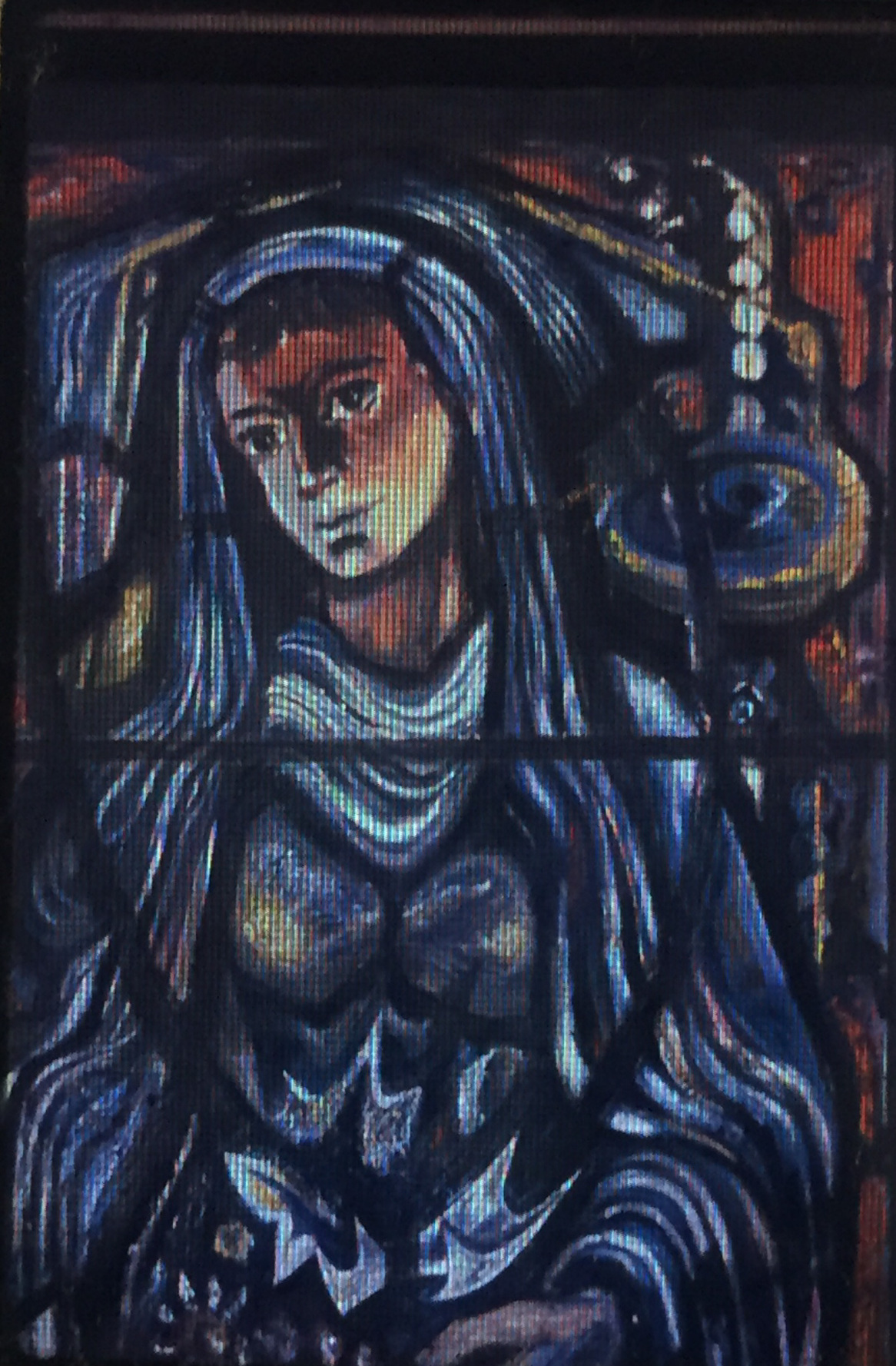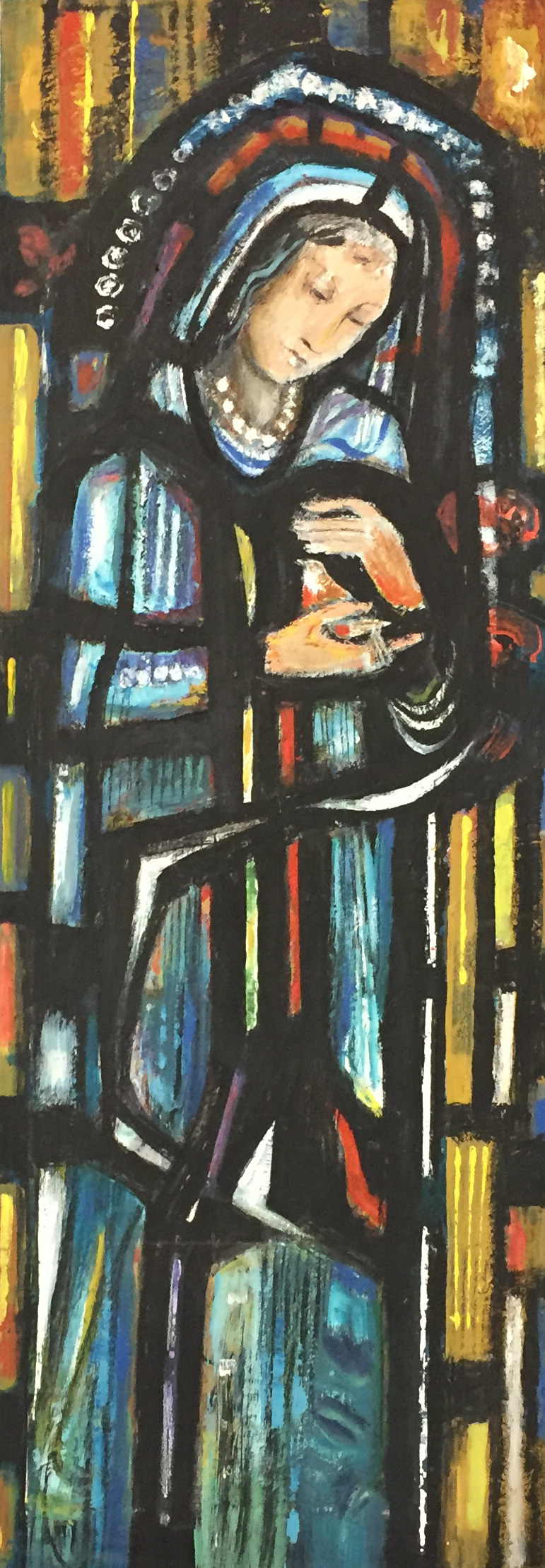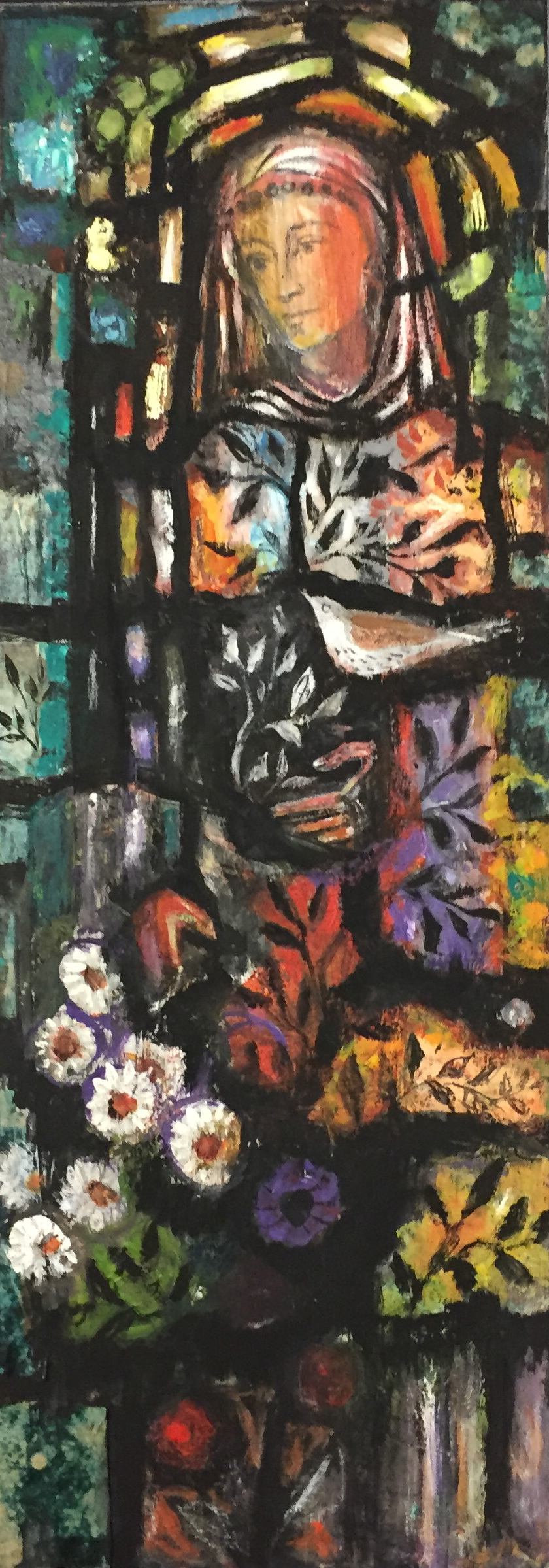
This page is best viewed in landscape

Ralph’s father and grandfather before him were both involved in the production of stained glass so it was unsurprising that he should have followed in their footsteps. Like his grandfather he was involved in designing the windows as well as selecting and painting each individual piece of glass. In his stained glass work Ralph followed traditional methods and employed “flashing” to great effect. Flashing uses clear glass and up to two layers of coloured glass fused together to enhance the colours and create subtle tones.
He described working in glass as designing with light and that a window should sing a song rather than tell a story. He felt that it was more akin to music than to painting and that the early craftsmen of the 12th and 13th century were the supreme masters of the art”. He was deeply influenced by the Gothic cathedrals.
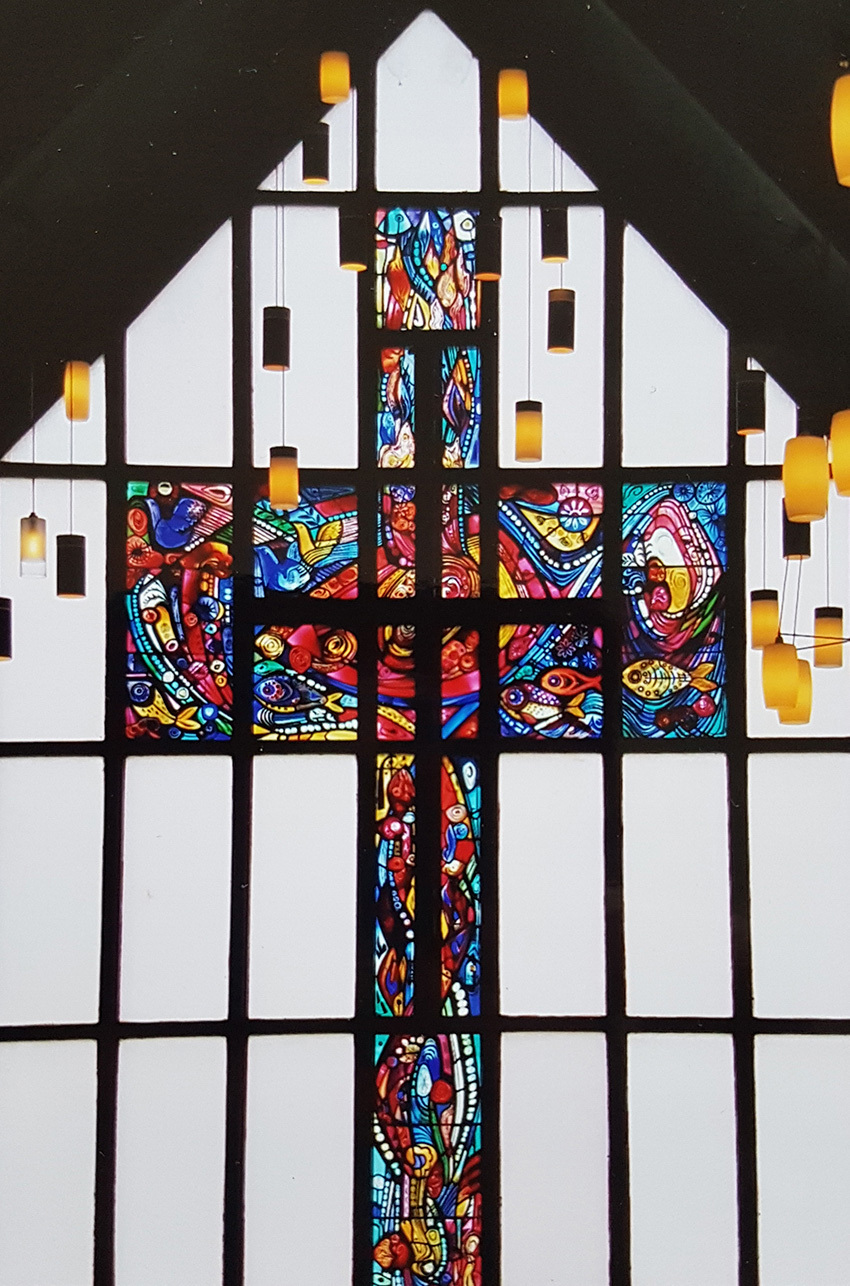
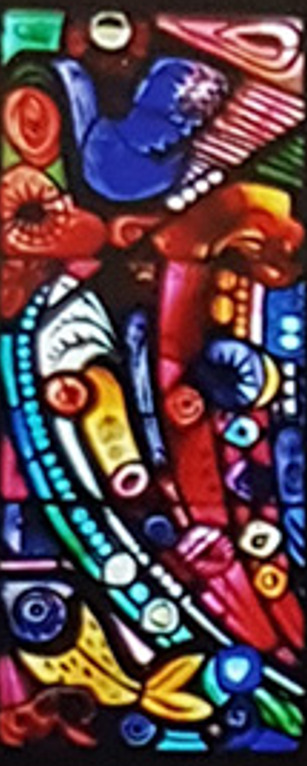
The next two pages show
details from the original cartoon
The window is in the chancel at the
front of the church. It shows a Tree of
Life starting from the whirlpool of
nothingness and rising upwards. It
expresses joy and happiness in the
creative upsurge of life, seeds bursting
into flower, flames of fire with patterns
through the flames, water and fish, the
air with birds and their young, all
promising the continuity of life, hope
and immortality. Starting from the
amoeba in the centre, it progresses to
the perfection of humanity symbolised
in the Cross.
(The description is taken from 'Broom
and its Church’ by Grahame Thomson)

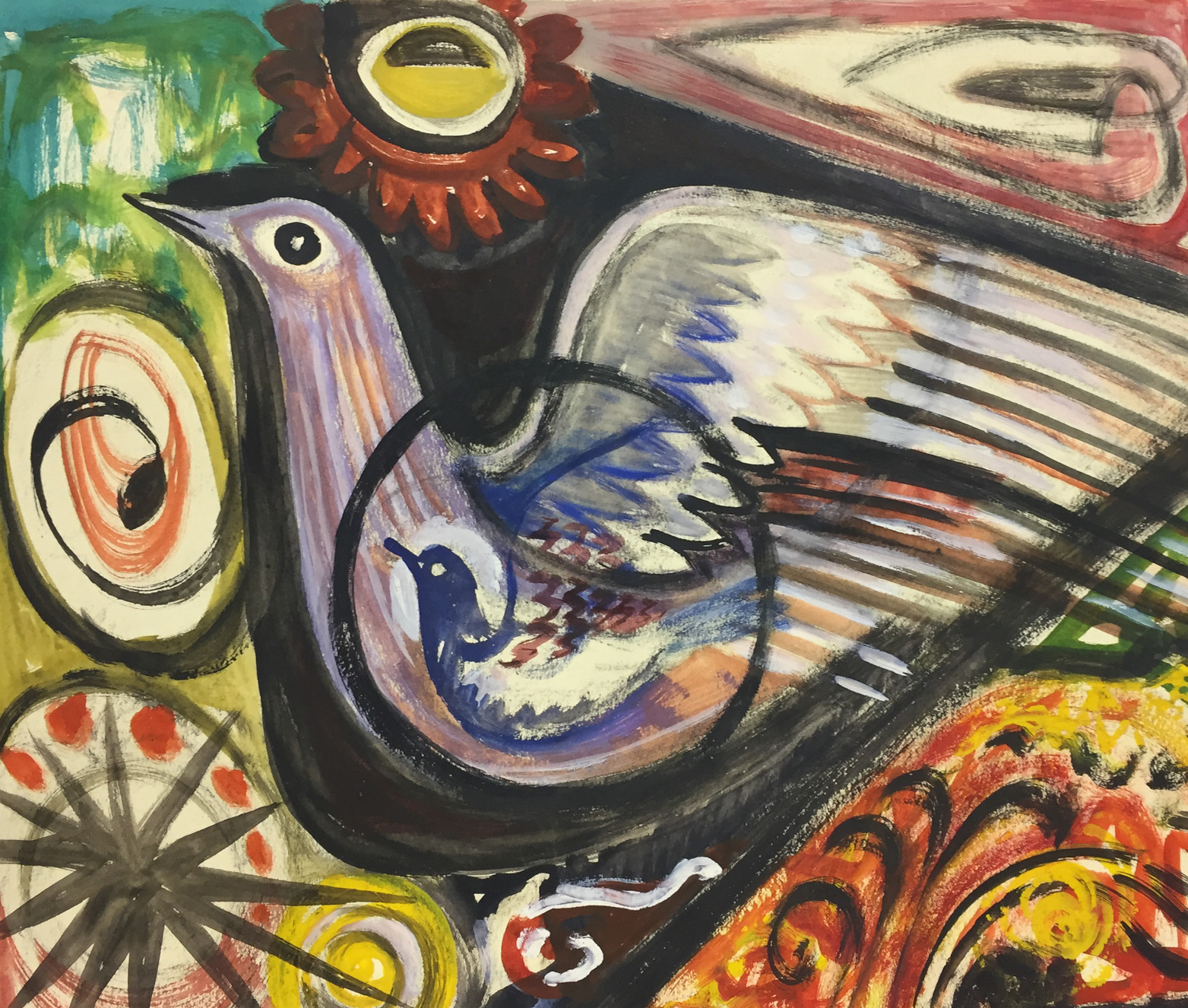
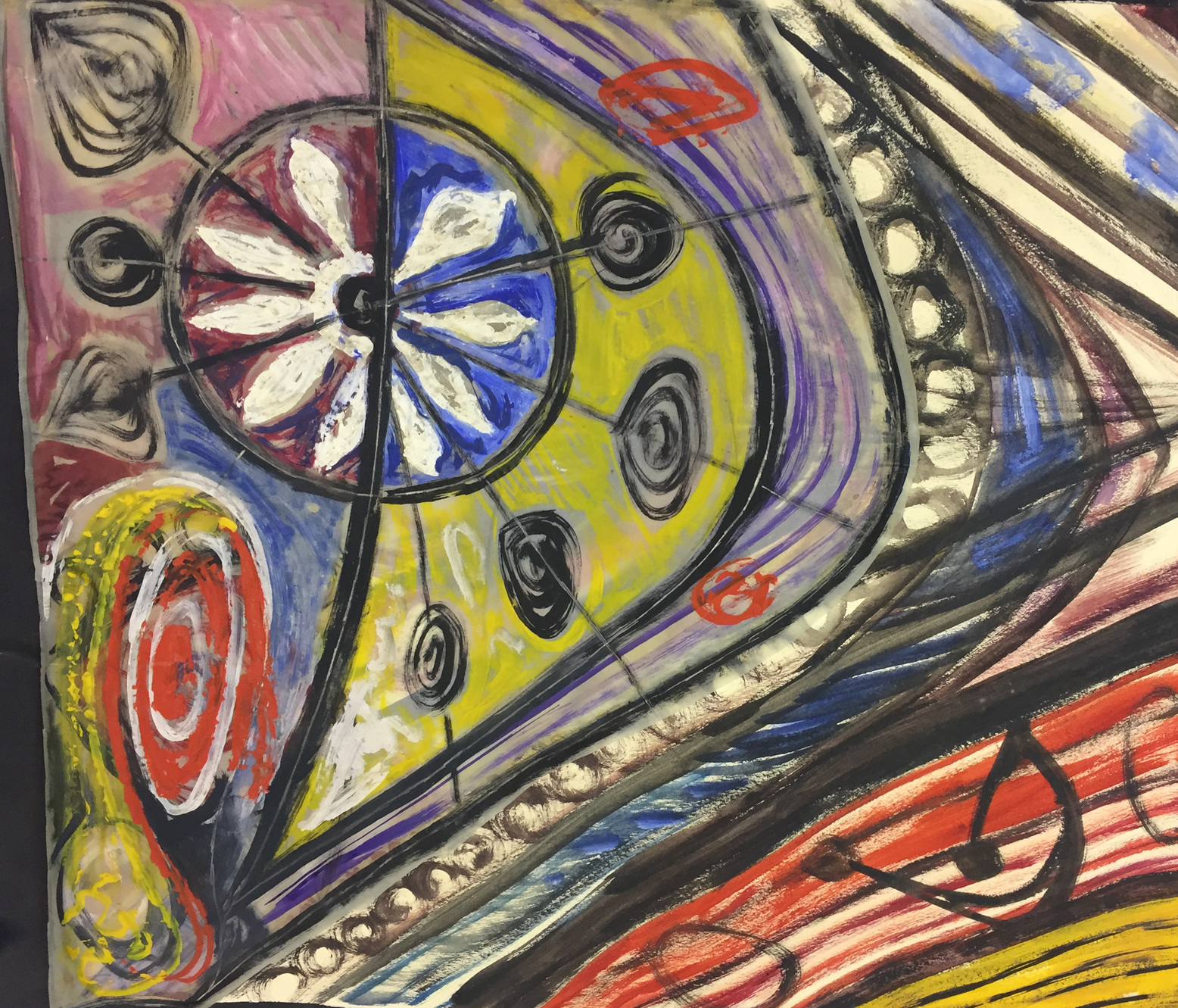

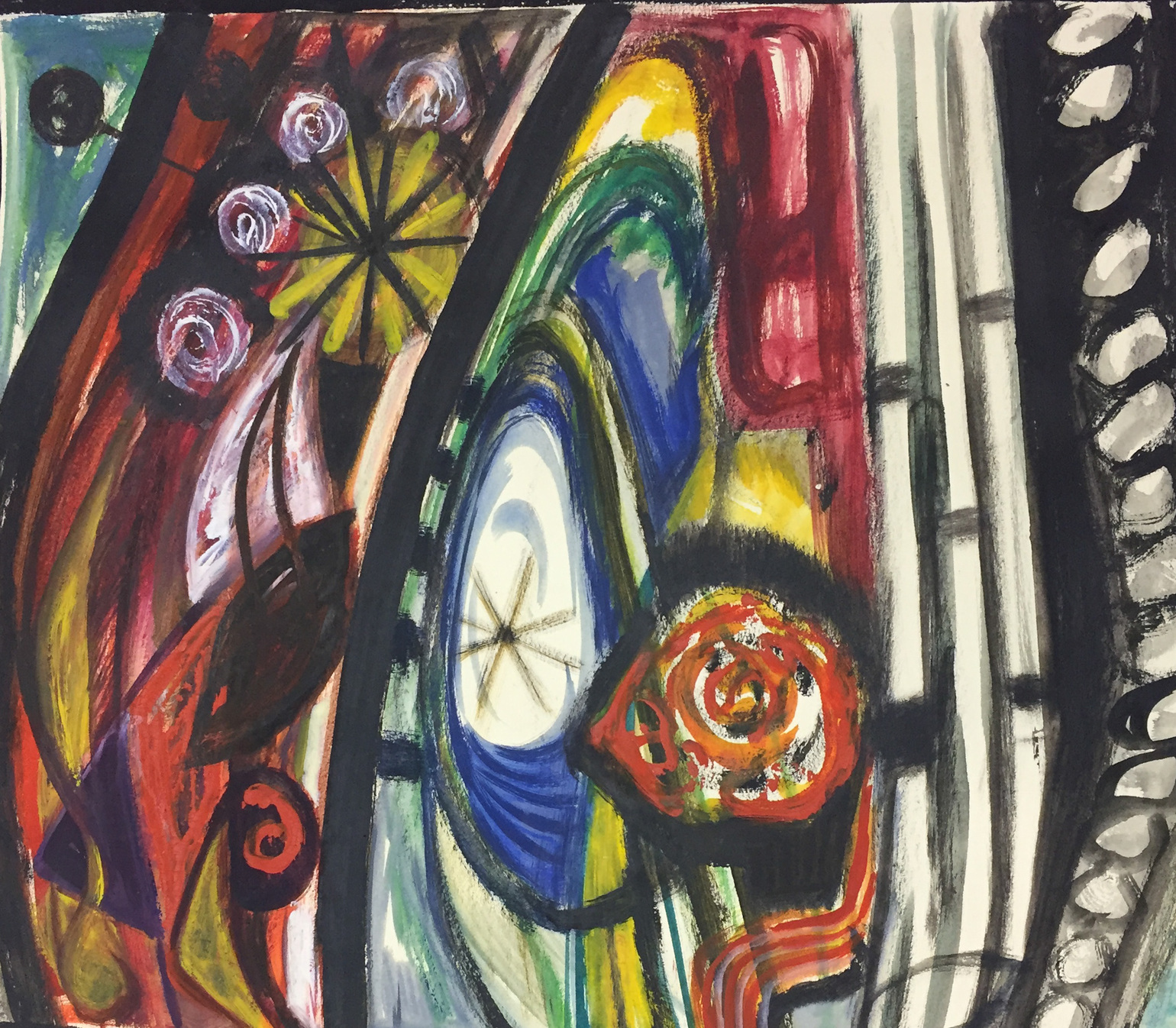
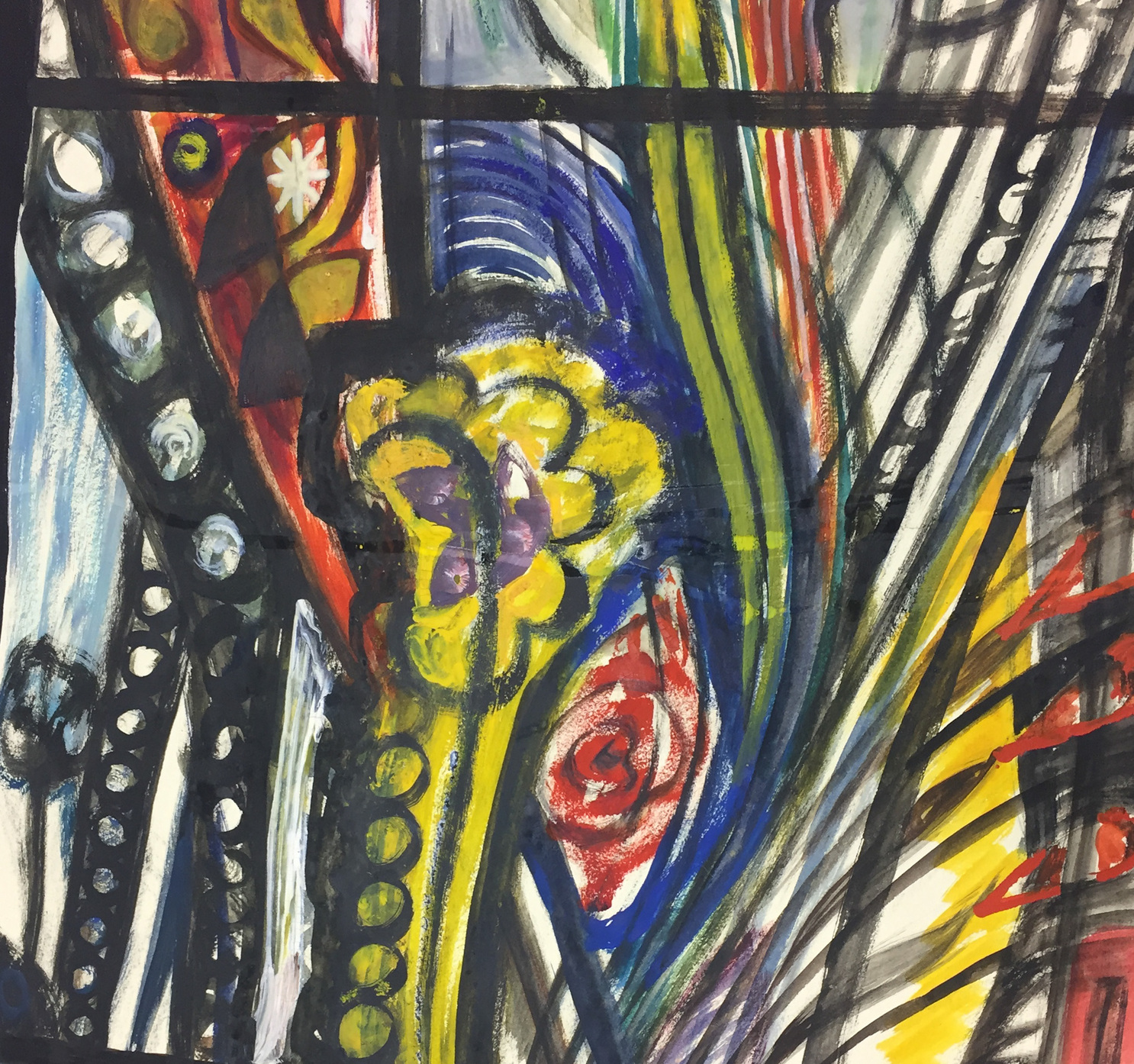
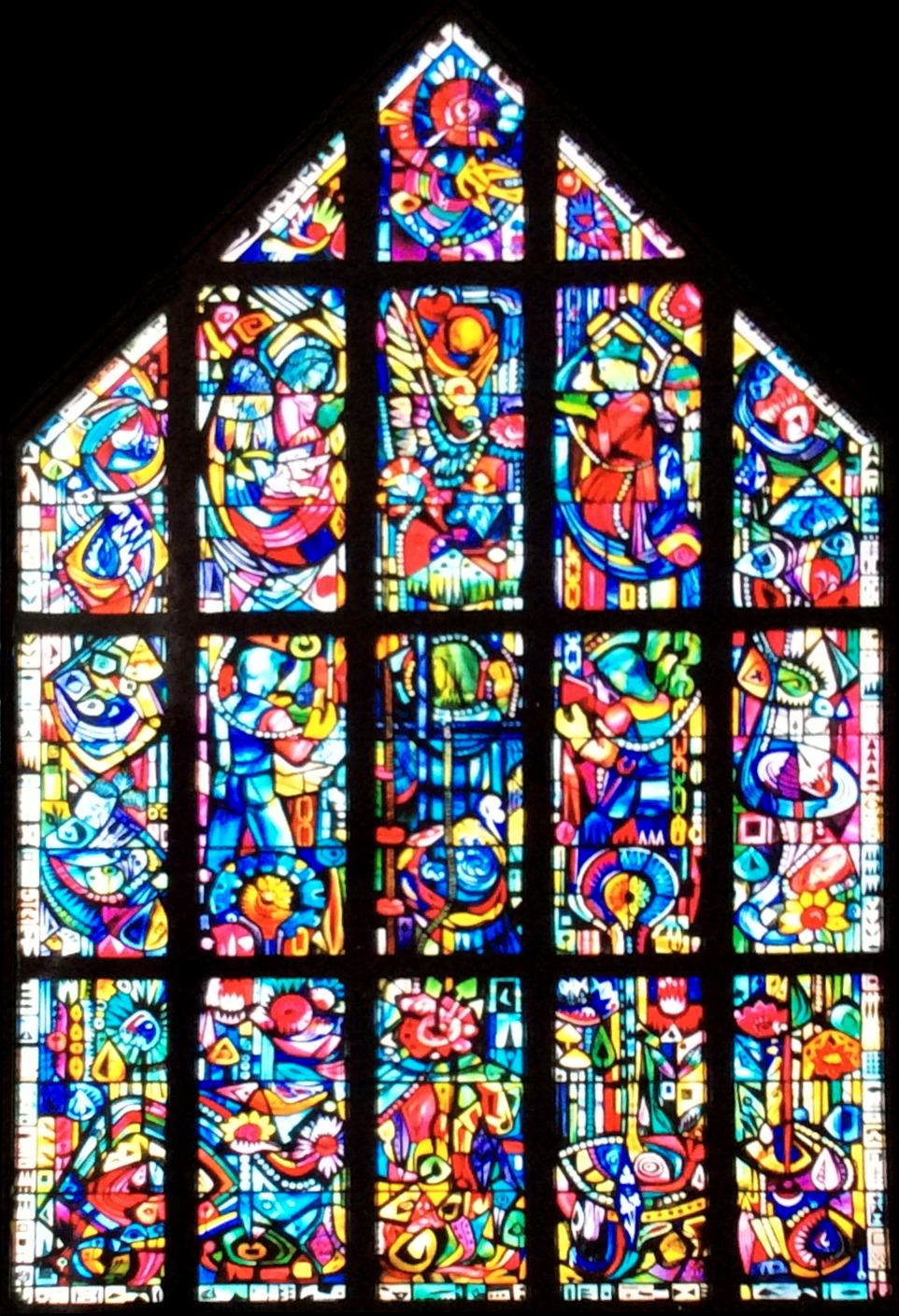
It shows the development of life, the
lower panels being the beginning,
“without form and void”, then above,
life on earth, with daily work
symbolised by the figures of the
workmen at the furnaces and the nets
of the fishermen who were the first
disciples. The set of panels above that
speaks of life eternal, the angels and
the heavenly hosts, and the topmost
panels the culmination of all things
“when heaven and earth are passed
away”
(The description is taken from 'Broom
and its Church' by Grahame Thomson)
The next three pages show
details from the original cartoon
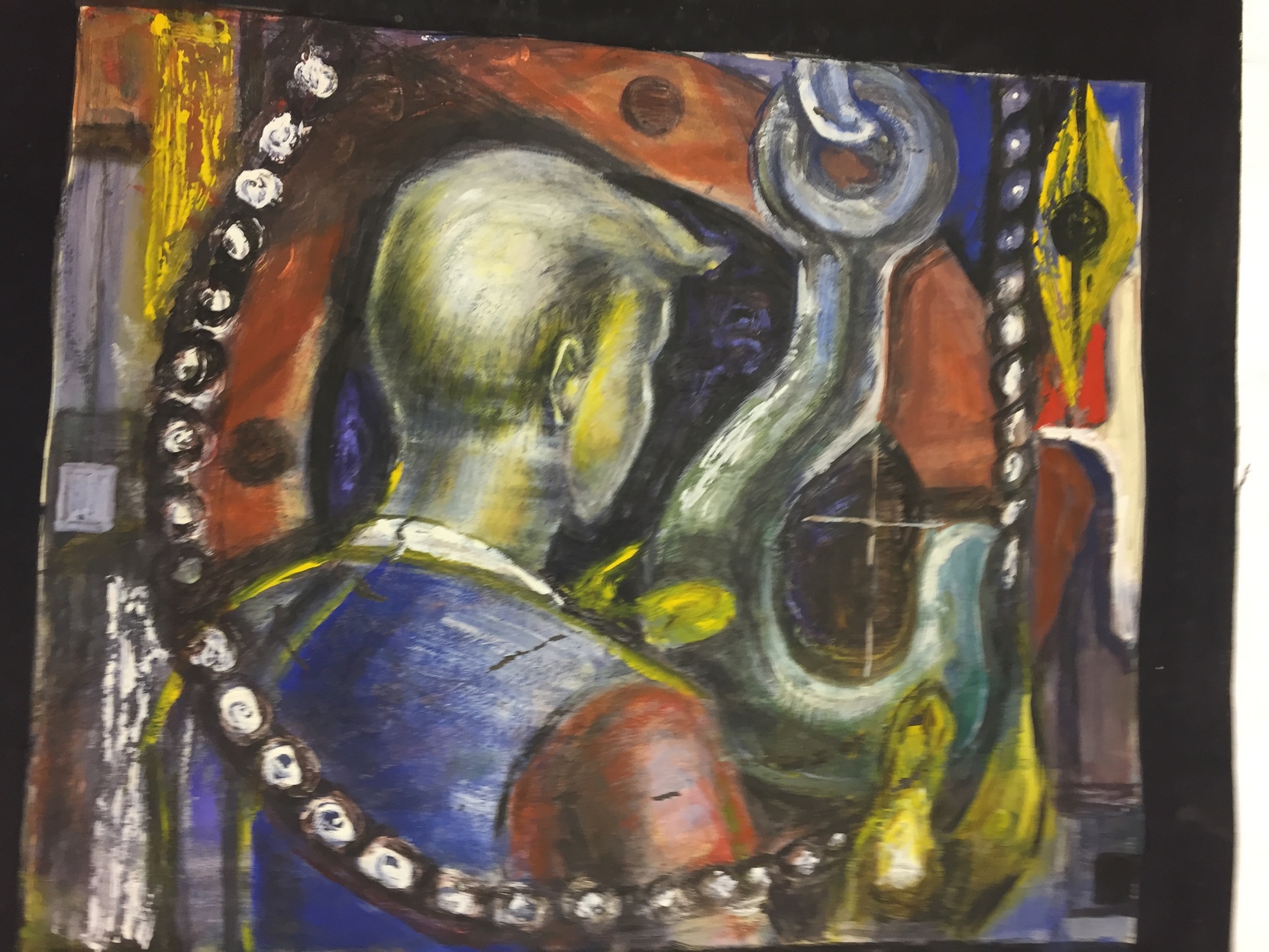
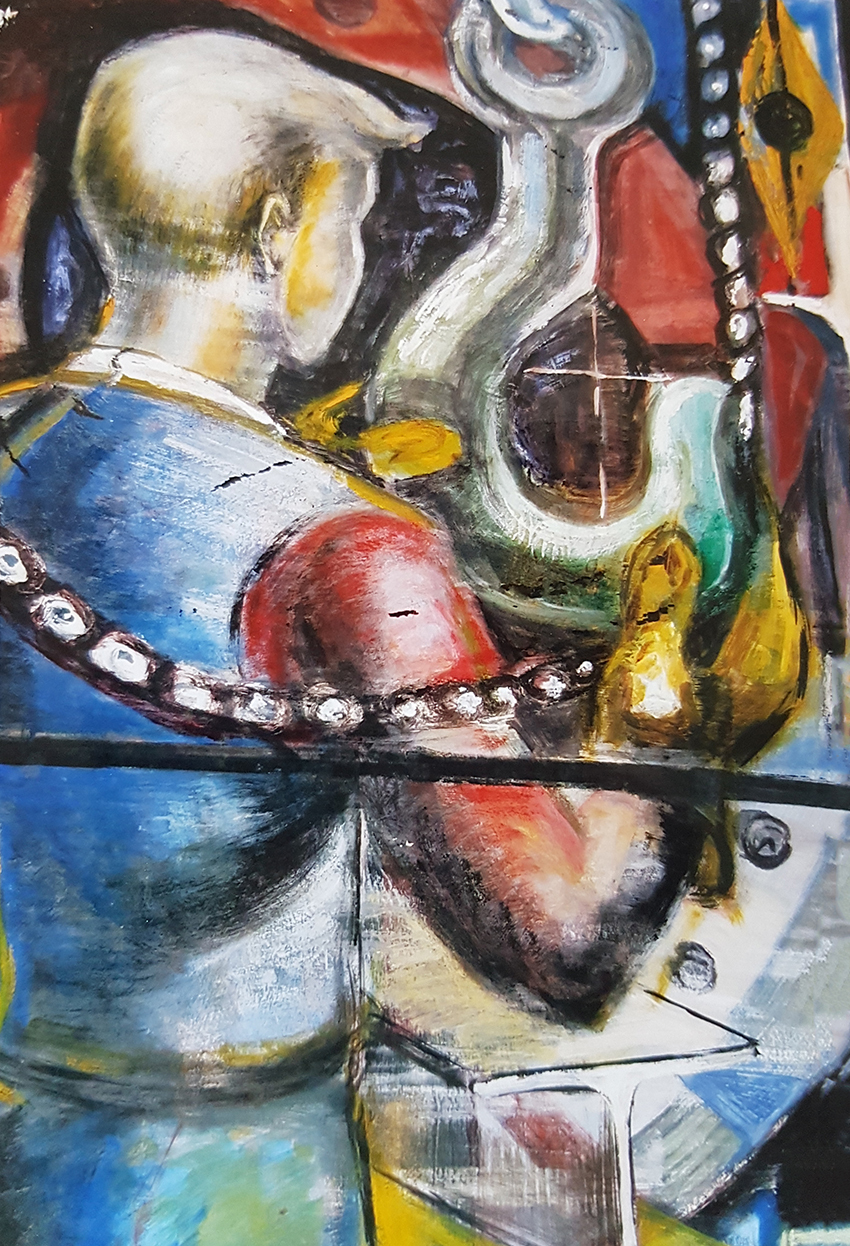
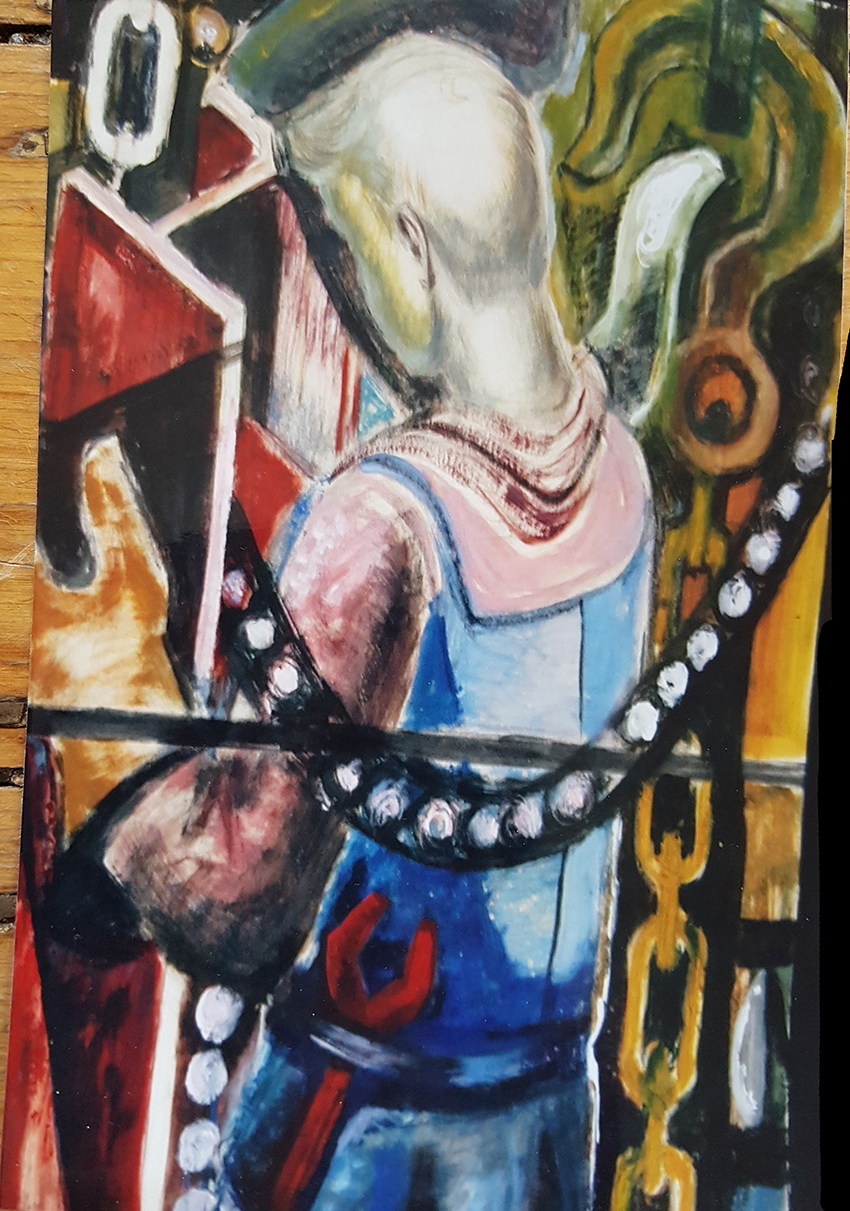

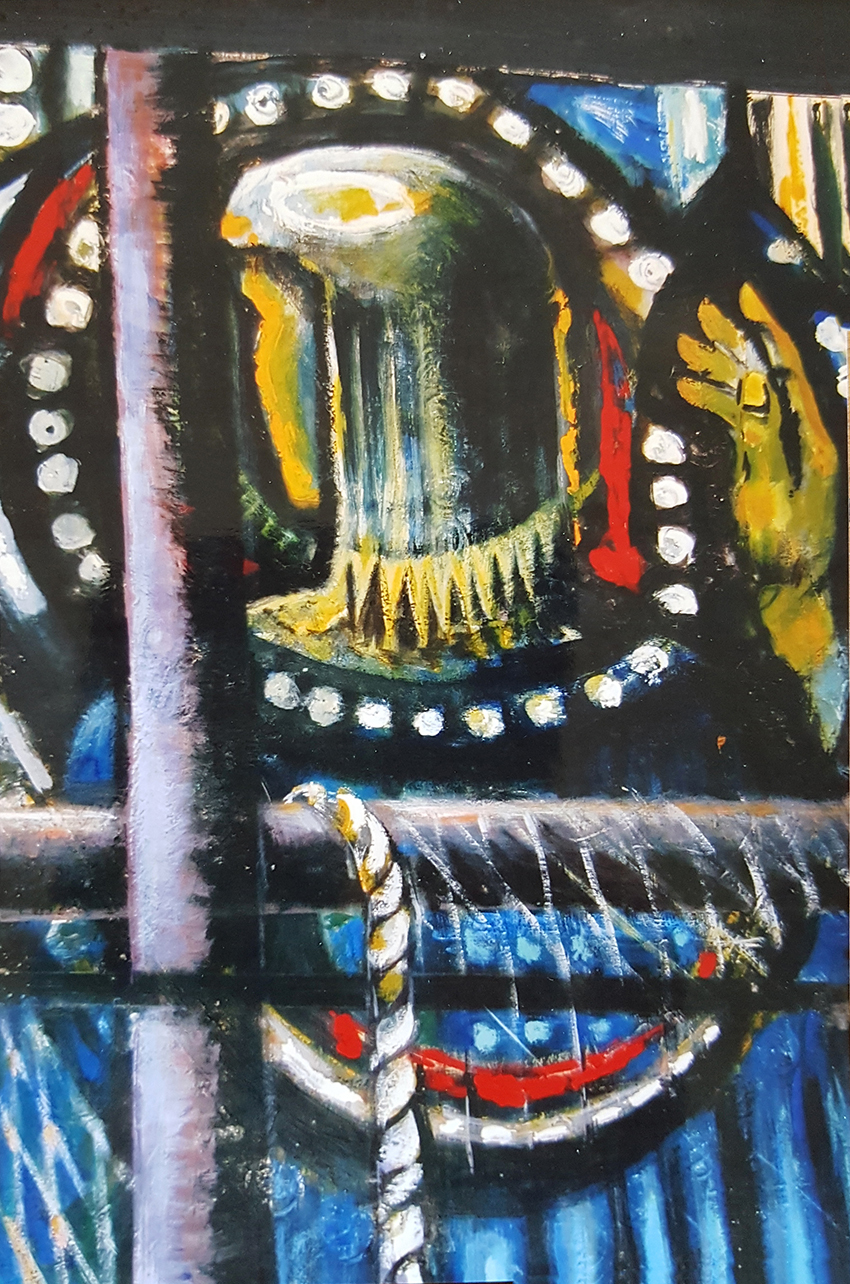


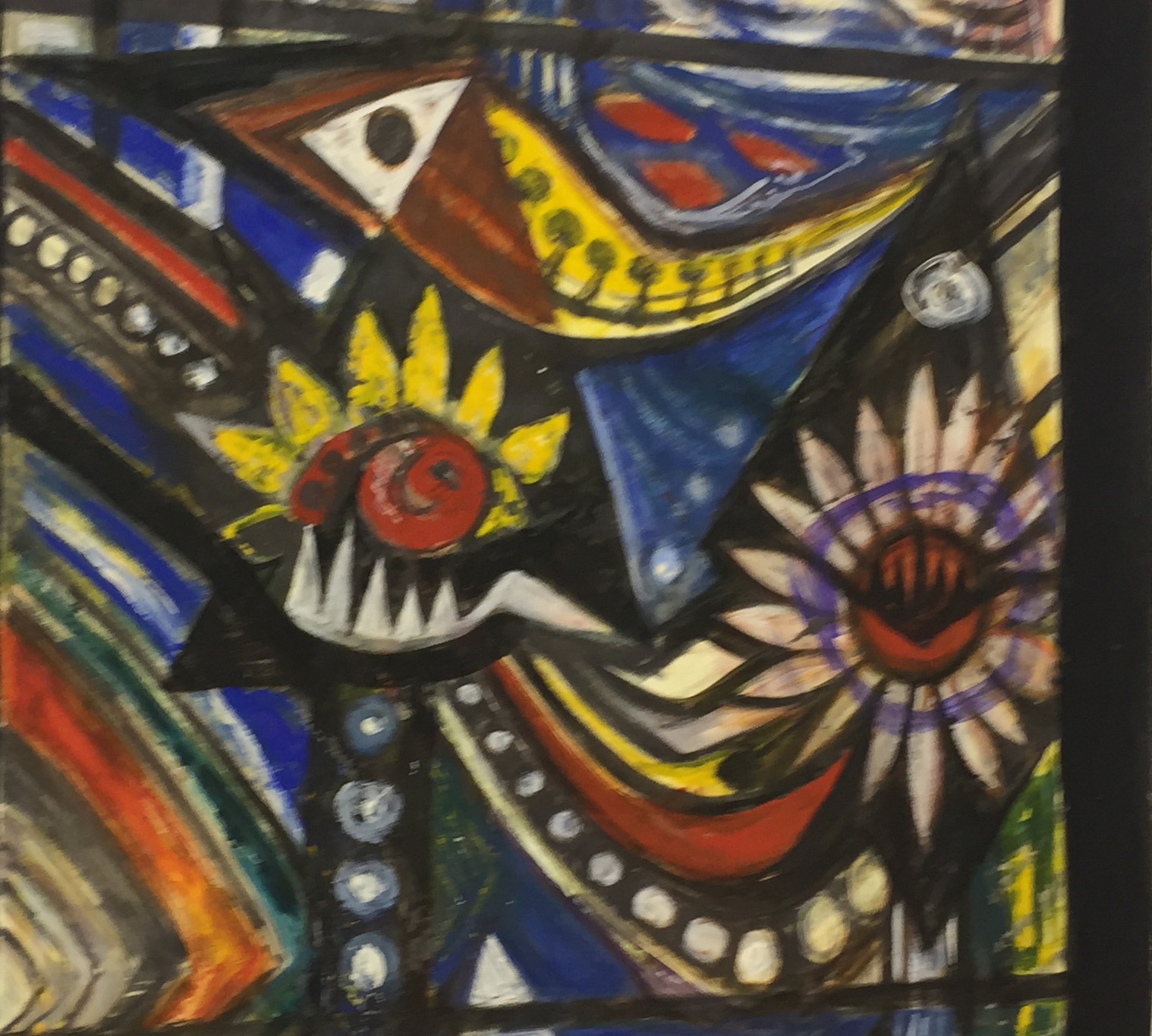
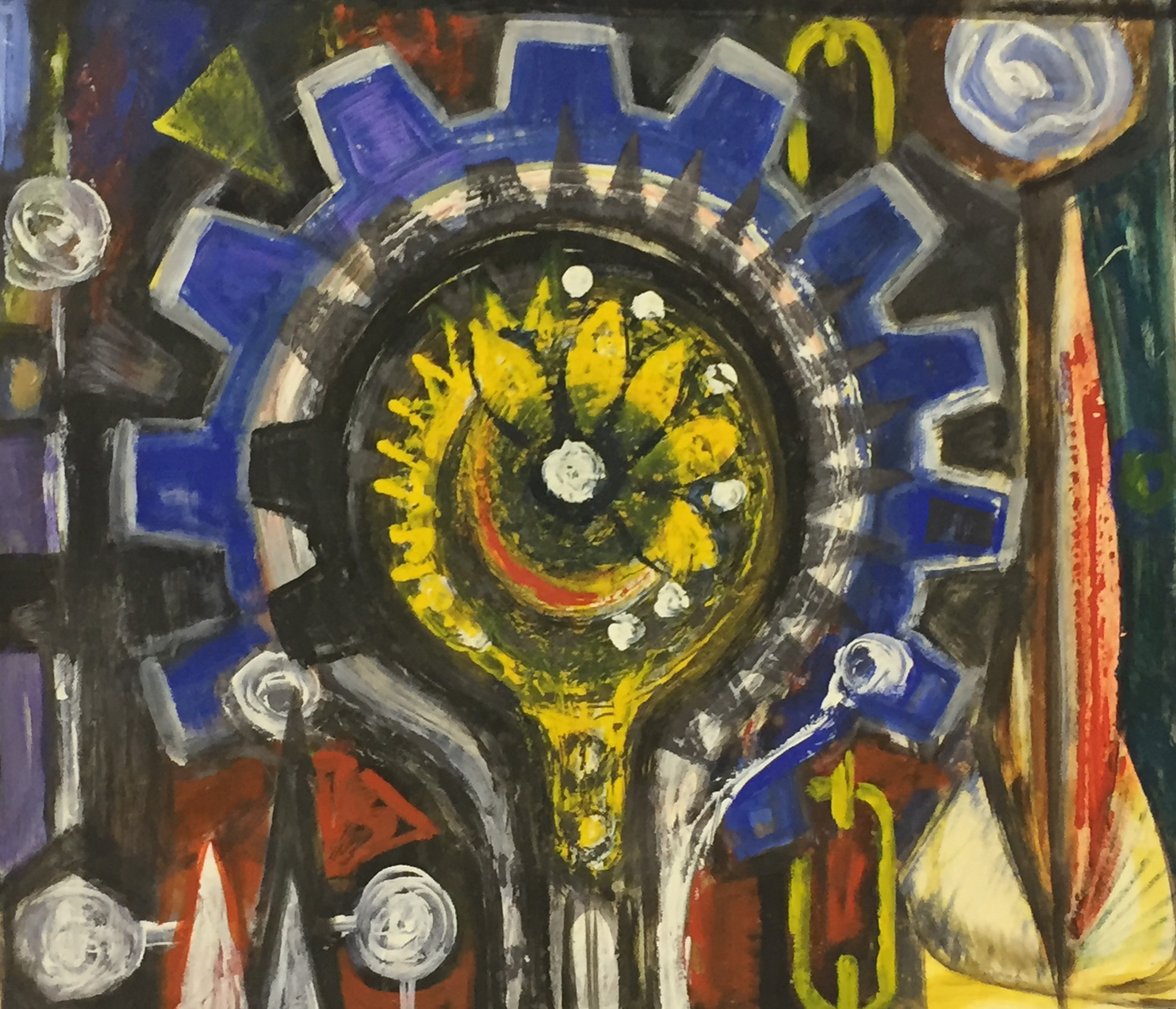
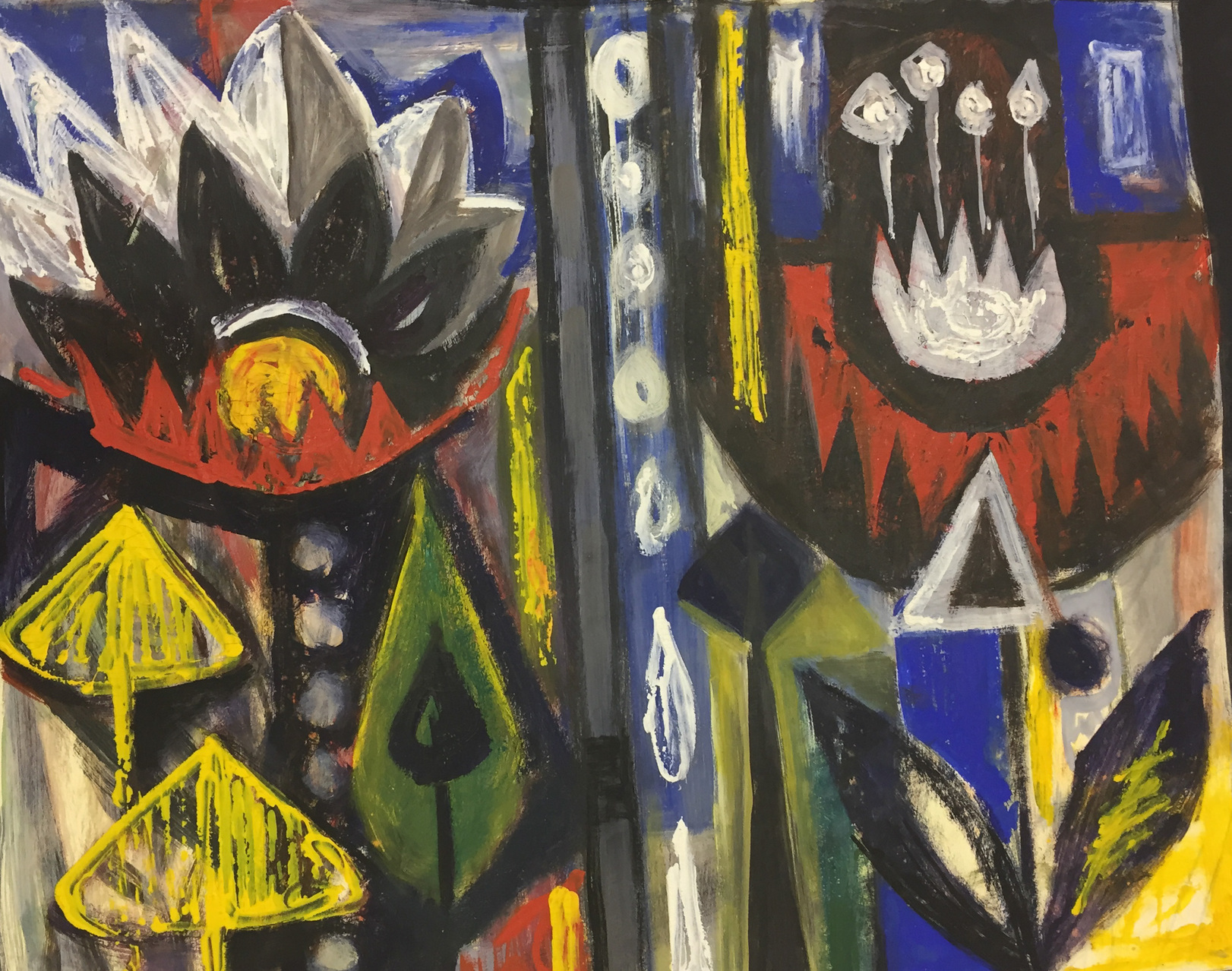

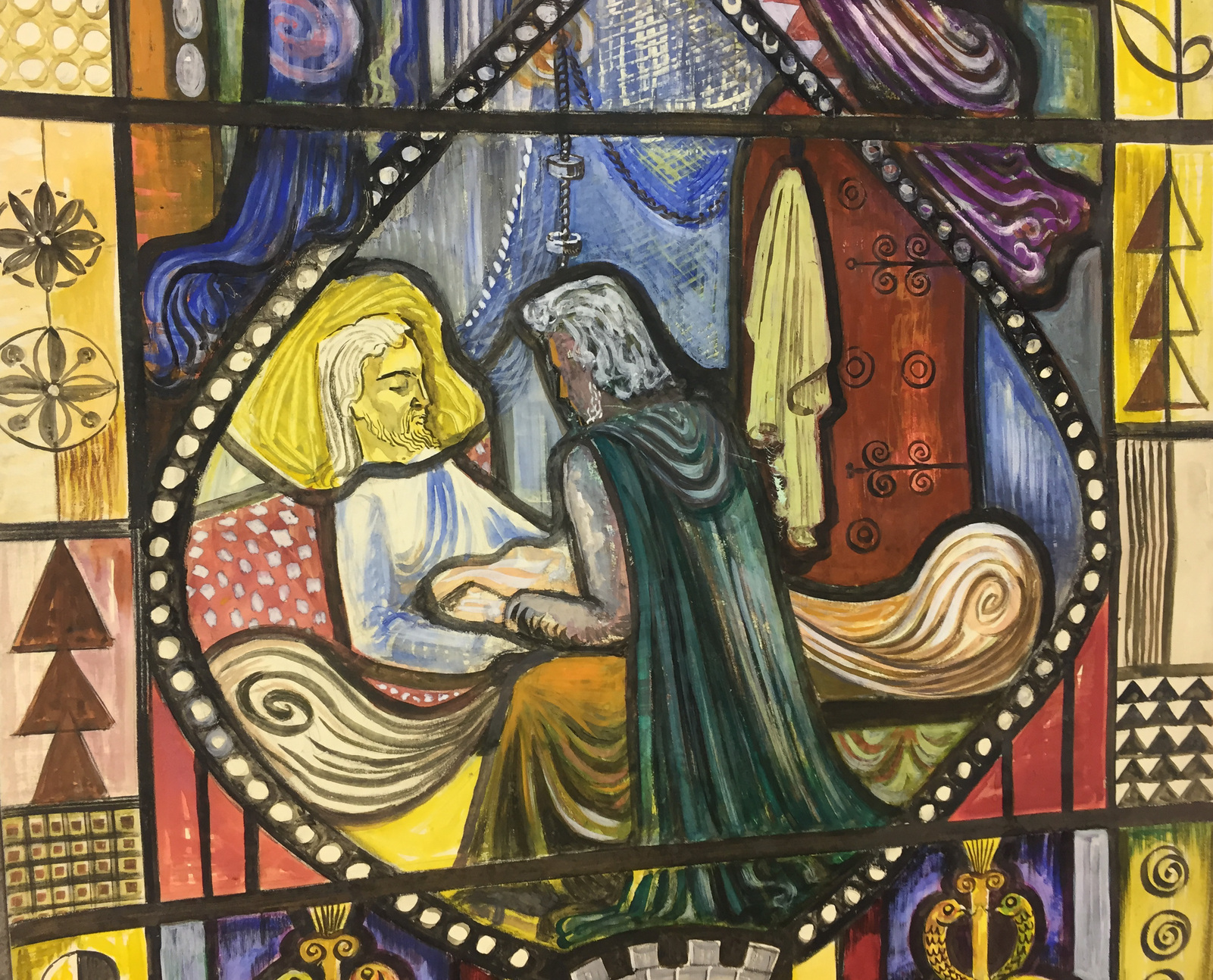
This 16-foot window (1955) was for West Church, Buckie, North East Scotland and dedicated to a local doctor. The church closed in the 1970s and the window is now in private ownership. Unfortunately, the side panels were destroyed when the window was removed from the church. Far right a detail of the window - taken from the original cartoon and shows portions of the intended side decorations.
At the top the burning bush (the symbol of the Church of Scotland). Below the Good Samaritan and below that the figure of St Luke the patron saint of doctors. Towards the bottom is St Luke ministering to the sick and at the very bottom the symbols of the medical profession flanking the Burgh crest of Buckie.
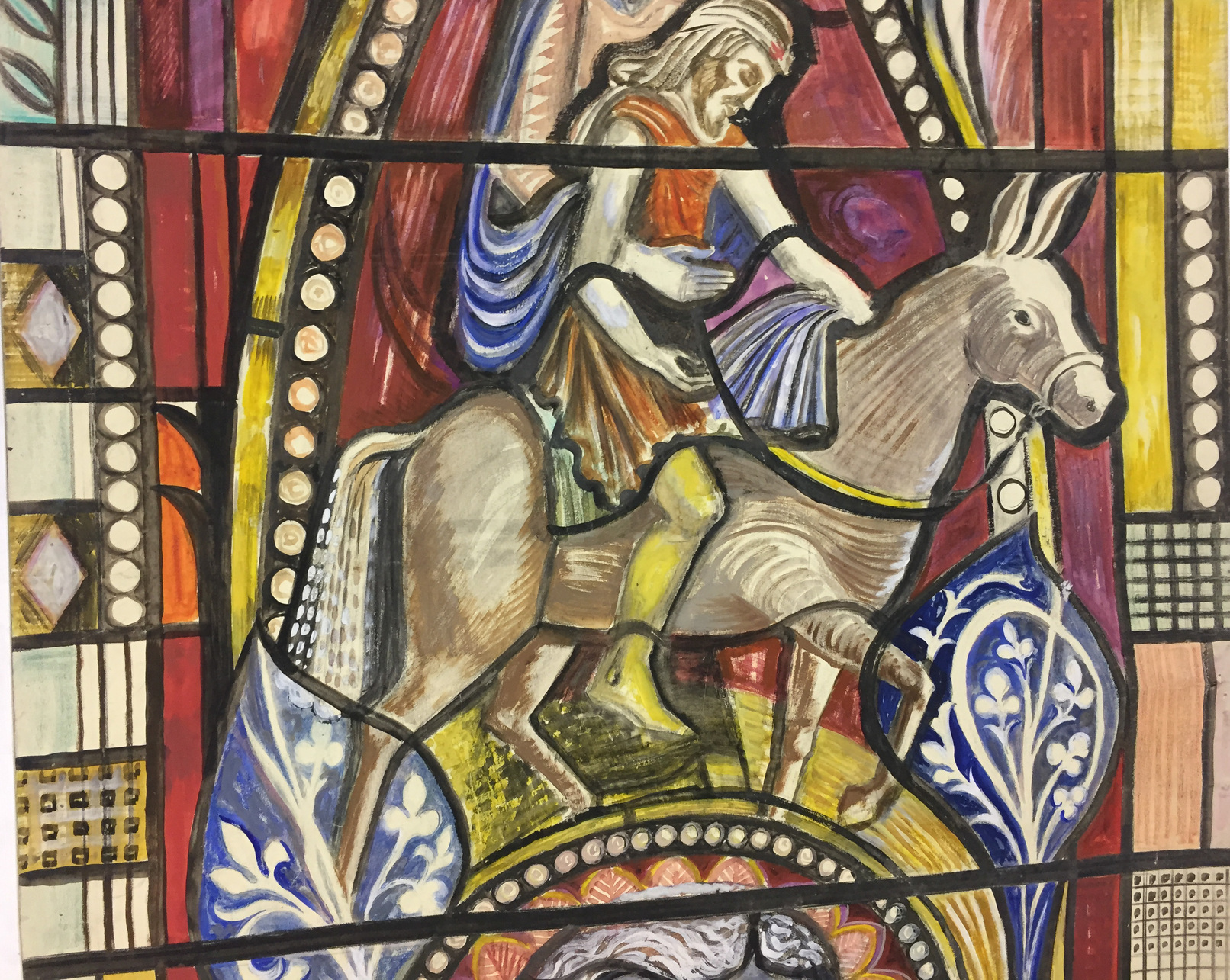
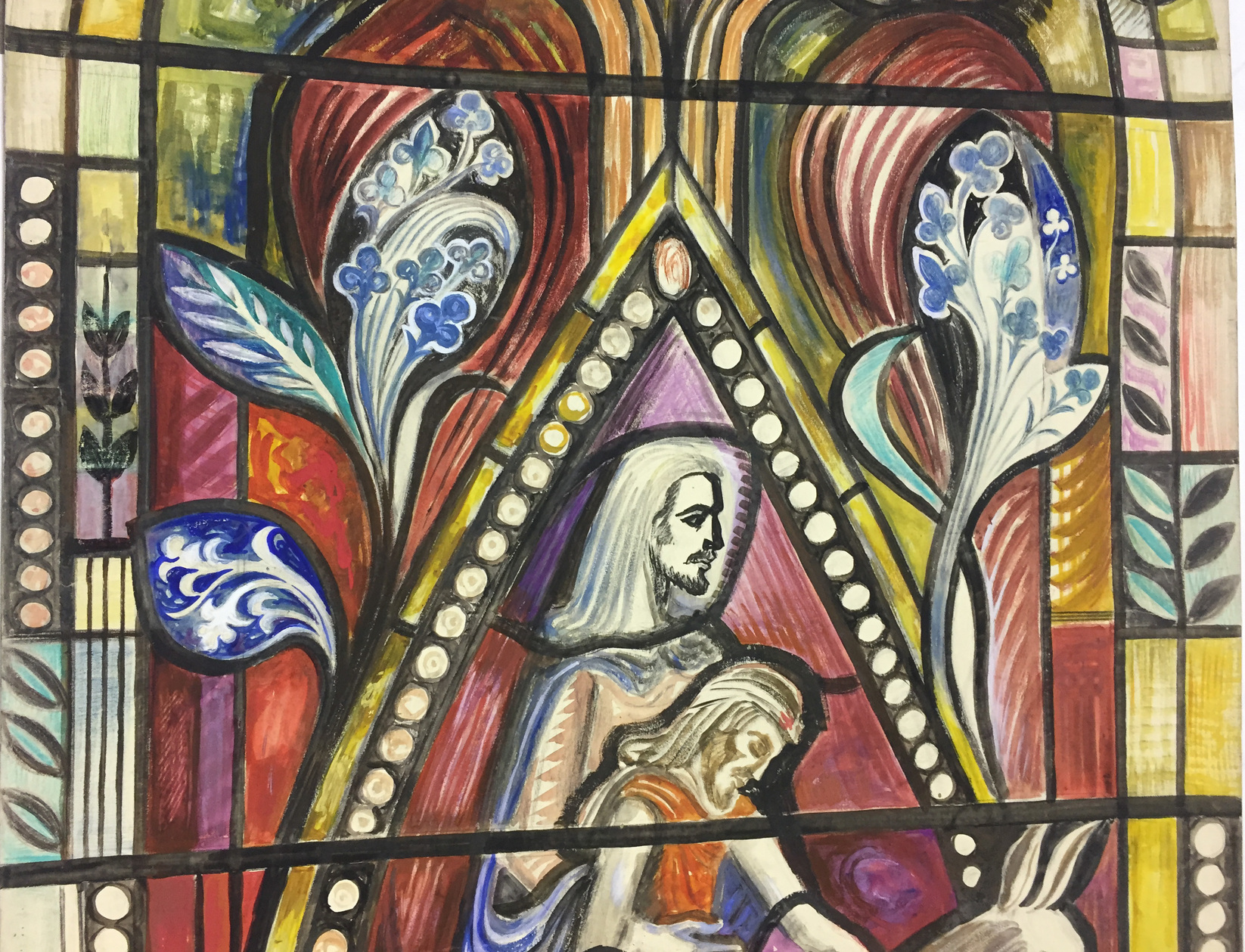
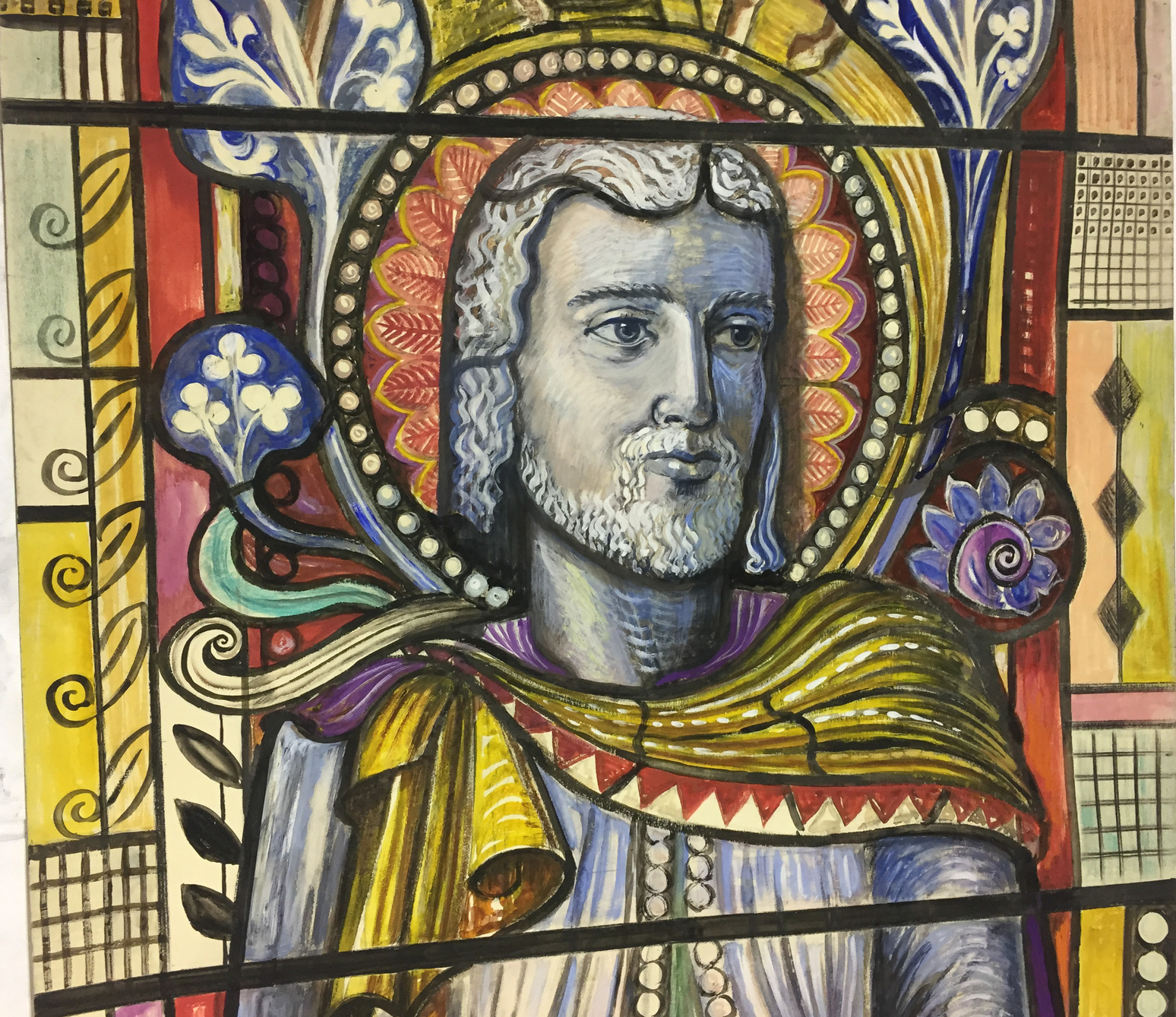
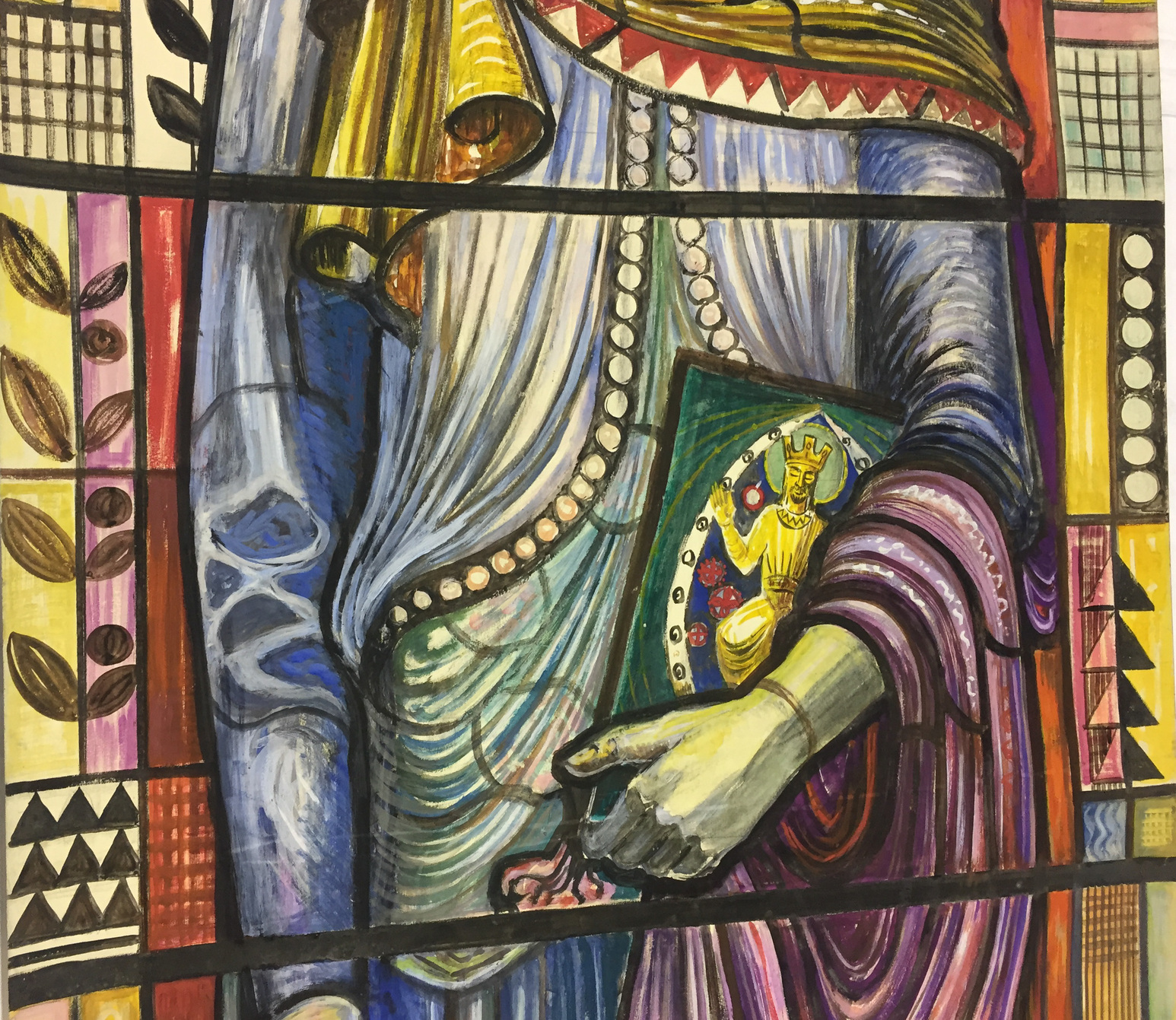

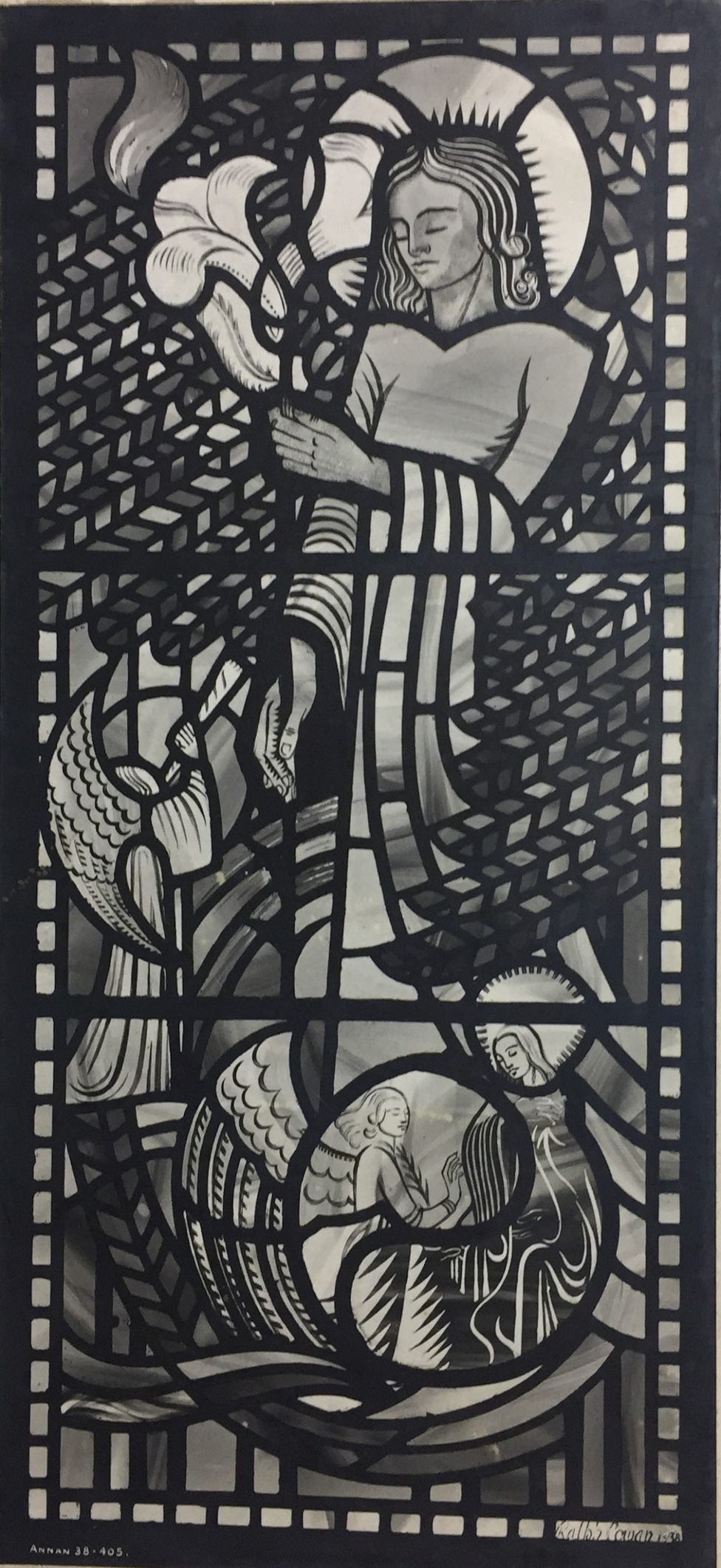
The windows depict St Michael defeating Lucifer and expelling him from Heaven and the Annunciation with the Virgin Mary and the angel Gabriel announcing that she will conceive a son. The Virgin holds a lily which symbolises purity.
These two windows were commissioned for the Church of Scotland’s church in the 1938 Empire Exhibition held in Bellahouston Park Glasgow.
After the exhibition the windows were gifted to Kelloholm Hall, Kirkconnel in Scotland. They are currently at St Conal's Church where the elders are in the process of applying for permission to have them installed in the Church.

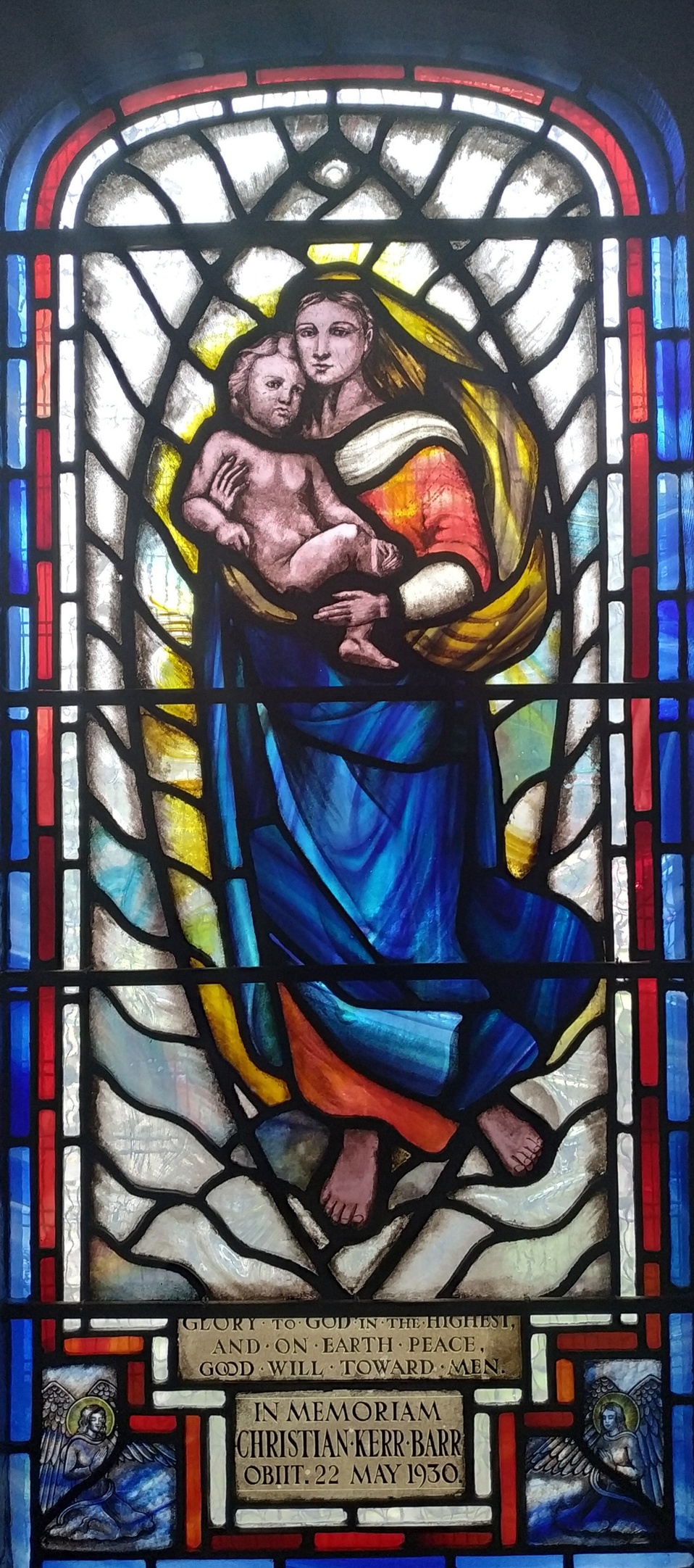

The window consists of three panels. With quotes from Zechariah, , it depicts the passage of life from youth to old age. The first panel shows a youthful Christ and children playing followed by the central window which is a representation of the Madonna and Child from the Sistine Chapel. The third panel portrays old age with the hour glass as a reminder of the transitoriness of existence.
This 1938 triptych is in the former Trinity St Paul’s church, Cambuslang, Glasgow and was the gift of Mr John Barr in memory of his wife.

The window shows the dove of the Holy Spirit, the burning bush, the symbol of the Church of Scotland as well as the communion cup with the Saltire cross of St Andrew.
Mountains and nature were of particular interest to the Rev. Murray who was a keen climber and photographer and the flowers depicted in the window have both Scottish and Biblical connections
This window was dedicated to the Reverent James Murray who was minister to Park church for nearly forty years.
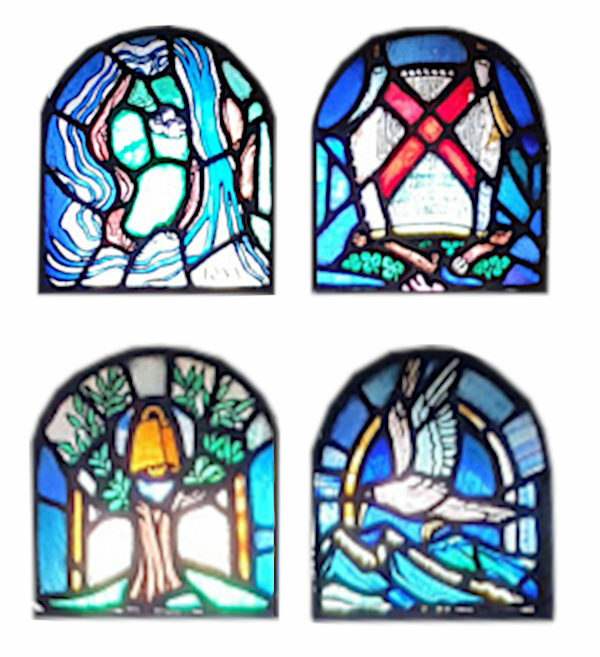
These are the symbols of four saints painted by Ralph for All Hallows Church in the Empire Exhibition of 1938. The Church was erected by the Episcopal Church in Scotland. They were the upper parts of four windows designed by Margaret Chilton of Edinburgh.
The windows now reside in the Good Shepherd Episcopal Church Glasgow.
Clockwise from top left the symbols of Saint Columba, Saint Patrick, Saint Ninian and Saint Kentigern.

Unfortunately, it is not known whether the design opposite or the following ones were made into windows or if they were intended for specific commissions.
